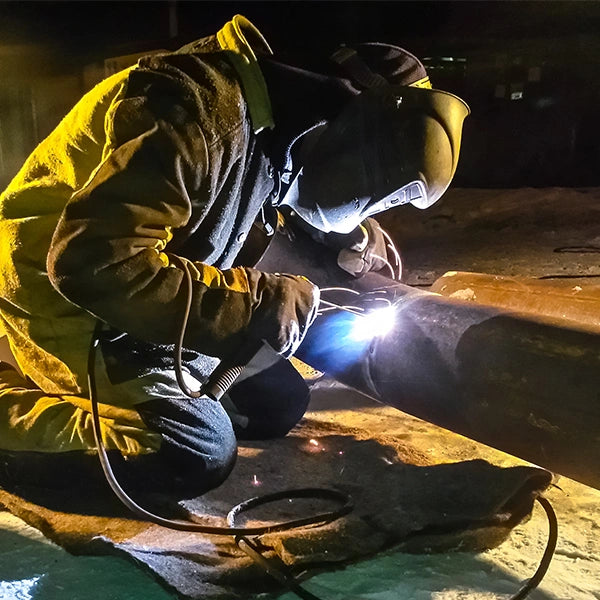Enhancing Your Welding WPS: Methods for Improved Efficiency and Efficiency
Enhancing Your Welding WPS: Methods for Improved Efficiency and Efficiency
Blog Article
The Ultimate Guide to Welding WPS Procedures: A Comprehensive Summary for Welders
In the complex world of welding, Welding Treatment Requirements (WPS) work as the foundation of guaranteeing top quality, consistency, and safety in welding procedures. Understanding the nuances of creating, implementing, and monitoring WPS treatments is necessary for welders seeking to elevate their craft and satisfy sector criteria. As we look into the numerous parts of a WPS and discover the intricacies of credentials and accreditation, we will reveal the vital function these procedures play in the realm of welding. Allow's get started on a trip to unravel the intricacies and significance of WPS procedures in welding techniques.
Significance of WPS Procedures
Comprehending the relevance of Welding Procedure Requirements (WPS) treatments is critical for guaranteeing the top quality and honesty of bonded structures. WPS procedures function as a roadmap for welders, outlining the essential actions, criteria, and materials required to attain a sound weld. By adhering to WPS standards, welders can make certain uniformity in their work, leading to reliable and structurally audio welds.
One of the primary factors why WPS procedures are crucial is their role in preserving weld quality and stability. Adhering to the specified welding specifications and methods outlined in the WPS assists stop issues such as porosity, fracturing, or insufficient fusion, which can jeopardize the toughness and resilience of the weld.

Elements of a WPS
A Welding Procedure Specification (WPS) usually makes up essential elements that detail the specific needs for performing a weld, guaranteeing consistency and top quality in the welding procedure. The key parts of a WPS include vital variables such as base metals, filler steels, interpass and preheat temperature levels, welding procedures, protecting gases, welding positions, and post-weld heat therapy requirements.
Base steels refer to the materials being signed up with, while filler steels are made use of to load the void in between the base steels during welding. The welding procedure lays out the details method to be used, whether it's gas steel arc welding (GMAW), secured metal arc welding (SMAW), or one more method. Welding placements define the positionings in which welding can be performed.

Qualification and Accreditation
Having developed the important elements of a Welding Procedure Requirements (WPS), the emphasis currently changes towards the crucial facets of credentials and accreditation in welding practices.

Accreditation, his response on the other hand, is the official acknowledgment of a welder's certifications by a relevant qualification body or organization. Welding qualifications are usually based upon the details welding processes, products, and positions a welder is certified to function with. Holding a legitimate welding qualification demonstrates that a welder meets market criteria and is competent to perform welding jobs to the required specs.
Developing a WPS
To establish a Welding Procedure Spec (WPS) that meets industry standards, mindful consideration of welding processes, materials, and functional criteria is important (welding WPS). The primary step in developing a WPS is to recognize the welding process to be utilized, such as gas metal arc welding This Site (GMAW) or protected metal arc welding (SMAW) When the welding procedure is identified, the following vital aspect is choosing the ideal materials, considering aspects like base metal kind, density, and joint layout. Operational criteria such as welding present, voltage, traveling rate, and protecting gas composition need to additionally be thoroughly defined in the WPS.

Carrying Out and Checking WPS
Upon finalizing the detailed Welding Procedure Specification (WPS) that carefully details welding processes, materials, functional criteria, and high quality guarantee procedures, the focus shifts to efficiently carrying out and monitoring the recognized procedures. Application entails guaranteeing that all welders involved in the project are acquainted with the WPS and follow it thoroughly throughout the welding process. Effective implementation and monitoring of the WPS are vital for making certain the integrity, toughness, and safety and security of the welded joints, eventually adding to the overall success of the welding task.
Final Thought
In verdict, understanding and complying with Welding Treatment Specifications (WPS) is important for welders to ensure top quality, consistency, and safety in their job. By knowing the components of a WPS, obtaining correct credentials and qualifications, developing thorough treatments, and applying and monitoring them efficiently, welders can enhance their abilities and efficiency in welding methods. Abiding by WPS procedures is crucial for producing top notch welds and conference market requirements.
In the detailed world of welding, Welding Treatment Specs (WPS) serve as the foundation of ensuring quality, consistency, and safety in welding operations. The welding procedure describes the certain method to be made use of, whether it's gas metal arc welding (GMAW), secured metal arc find more information welding (SMAW), or another technique.To establish a Welding Treatment Requirements (WPS) that fulfills industry requirements, mindful factor to consider of welding procedures, materials, and functional parameters is necessary. The very first step in creating a WPS is to identify the welding procedure to be utilized, such as gas metal arc welding (GMAW) or shielded steel arc welding (SMAW)Upon completing the thorough Welding Procedure Specification (WPS) that thoroughly information welding processes, products, functional specifications, and high quality guarantee actions, the focus shifts to efficiently executing and keeping track of the well established treatments.
Report this page